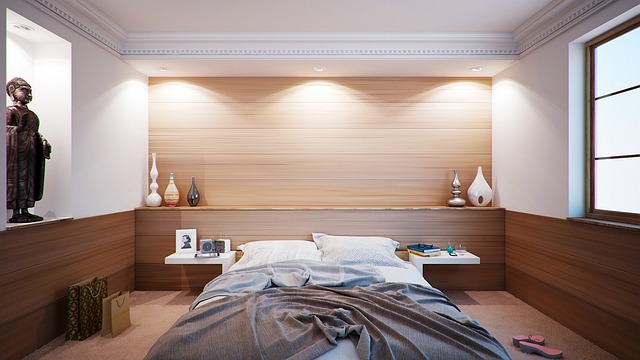Neuroaesthetics in Home Design: The Science of Visual Pleasure
The intersection of neuroscience and interior design might seem unexpected, but it's revolutionizing how we create spaces that resonate with our deepest aesthetic preferences. Imagine walking into a room that instantly soothes your mind, boosts your mood, and enhances your cognitive function—all through carefully crafted visual elements. This isn't science fiction; it's the emerging field of neuroaesthetics in home design.

Studies using functional magnetic resonance imaging (fMRI) have revealed that when we view aesthetically pleasing spaces, areas of the brain associated with reward and pleasure light up. This explains why a well-designed room can instantly lift our spirits and why we’re drawn to certain visual elements over others. Designers are now tapping into this knowledge to create spaces that not only look good but also feel good on a neurological level.
The Golden Ratio in Interior Spaces
One of the key principles in neuroaesthetic design is the use of the golden ratio, a mathematical proportion found throughout nature that our brains find inherently pleasing. This ratio, approximately 1:1.618, can be applied to room layouts, furniture arrangements, and even the dimensions of decor items.
Designers are incorporating the golden ratio into their work by creating focal points that align with this proportion, such as positioning a statement piece of art at the golden section of a wall. They’re also using it to determine the ideal size relationships between furniture pieces, ensuring that sofas, coffee tables, and area rugs are proportioned in a way that feels subconsciously harmonious to occupants.
Color Psychology and Cognitive Function
The impact of color on our mood and cognitive function is well-documented, but neuroaesthetics takes this understanding further. Different colors can affect brain wave activity, hormone production, and even our perception of time and space. For example, blue hues have been shown to enhance creativity and productivity, making them ideal for home offices or study areas.
Designers are now using color more strategically, not just for aesthetic appeal but for cognitive benefits. They might incorporate calming greens in bedrooms to promote better sleep or energizing yellows in workout spaces to boost motivation. The key is understanding the neurological effects of each color and applying them thoughtfully throughout the home.
Biomorphic Forms and Patterns
Our brains have evolved to recognize and appreciate natural forms and patterns. This preference, known as biophilia, extends beyond simply bringing plants indoors. Neuroaesthetic design incorporates biomorphic forms—shapes and patterns that mimic those found in nature—to create spaces that feel instinctively comforting and visually engaging.
This might manifest as curved furniture that echoes the organic lines of river stones, wallpaper with fractal patterns similar to those found in leaves or snowflakes, or light fixtures that cast dappled shadows reminiscent of sunlight through a forest canopy. These elements tap into our innate connection with nature, promoting a sense of well-being and reducing stress.
Multisensory Design for Cognitive Harmony
While visual elements are crucial, neuroaesthetics recognizes that our perception of space involves all our senses. A truly harmonious environment engages multiple sensory pathways simultaneously. This multisensory approach can enhance cognitive function, improve mood, and create more memorable experiences within our homes.
Designers are now considering not just how a space looks, but how it sounds, feels, and even smells. This might involve incorporating water features for soothing auditory stimulation, using textured surfaces to engage the sense of touch, or integrating scent diffusers with calming essential oils. The goal is to create a holistic sensory experience that aligns with our neurological preferences.
Lighting Design and Circadian Rhythms
One of the most significant applications of neuroaesthetics in home design is in lighting. Our circadian rhythms—the internal biological clocks that regulate sleep-wake cycles—are heavily influenced by light exposure. Poorly designed lighting can disrupt these rhythms, leading to sleep issues, mood disorders, and decreased cognitive function.
Neuroaesthetic lighting design aims to mimic natural light patterns throughout the day. This might involve installing smart lighting systems that automatically adjust color temperature and intensity to match the sun’s natural progression. Cool, bright light in the morning can help boost alertness, while warmer, dimmer light in the evening promotes relaxation and prepares the body for sleep.
Spatial Complexity and Cognitive Stimulation
While simplicity and minimalism have their place, neuroaesthetics suggests that a certain level of visual complexity is beneficial for cognitive function. Spaces that are too sterile or monotonous can lead to understimulation and boredom, while environments with the right amount of visual interest can enhance creativity and mental engagement.
Designers are incorporating this principle by creating layered, textured spaces that offer visual depth and discovery. This might involve mixing patterns and textures, creating vignettes that tell a story, or incorporating art and objects that invite contemplation. The key is to strike a balance between order and complexity, creating spaces that are neither chaotic nor bland.
The Future of Neuroaesthetic Home Design
As research in neuroaesthetics continues to advance, we can expect to see even more sophisticated applications in home design. Virtual and augmented reality technologies may allow us to test and optimize spaces for individual neurological preferences before they’re built. Adaptive environments that respond to our moods and cognitive states in real-time could become a reality, with spaces that automatically adjust to support our well-being throughout the day.
The integration of neuroaesthetics into home design represents a paradigm shift in how we think about our living spaces. It’s no longer just about creating visually appealing interiors; it’s about designing environments that actively contribute to our cognitive health, emotional well-being, and overall quality of life. As we continue to unravel the mysteries of how our brains perceive and respond to beauty, our homes will evolve into more than just shelters—they’ll become tailored sanctuaries for our minds.





